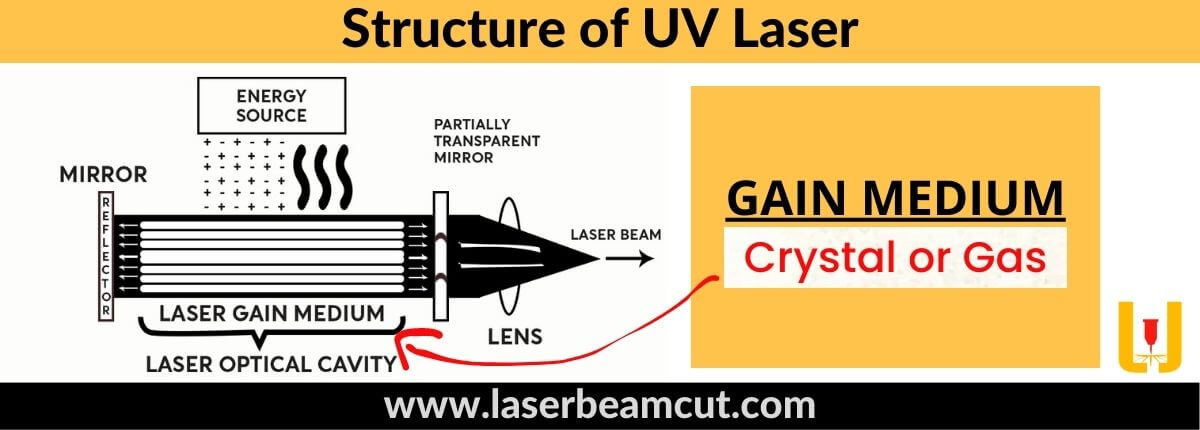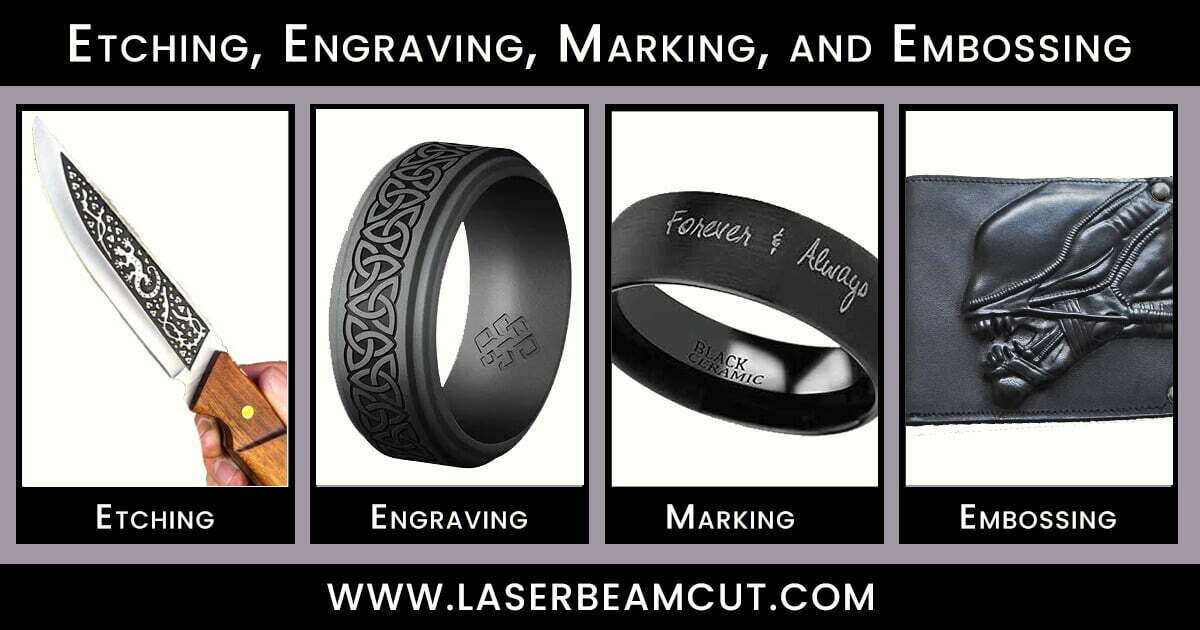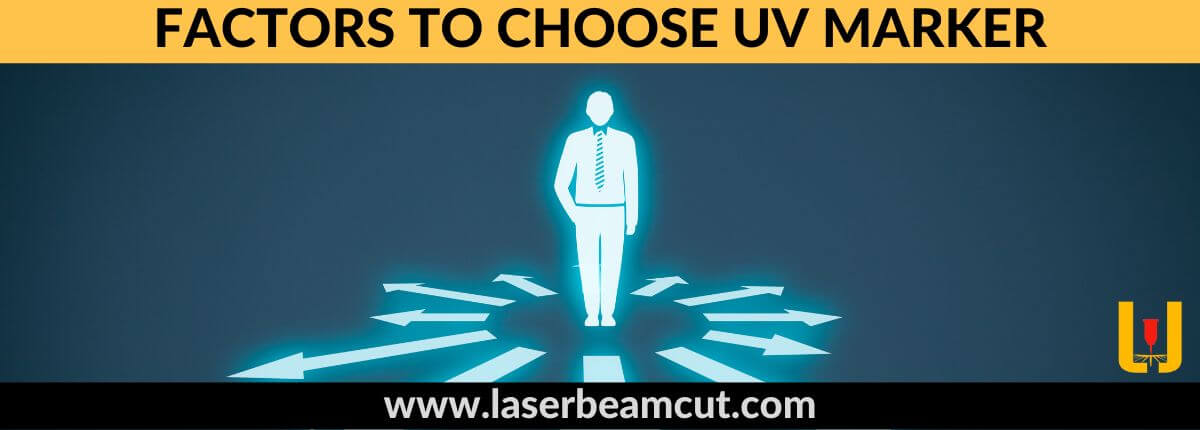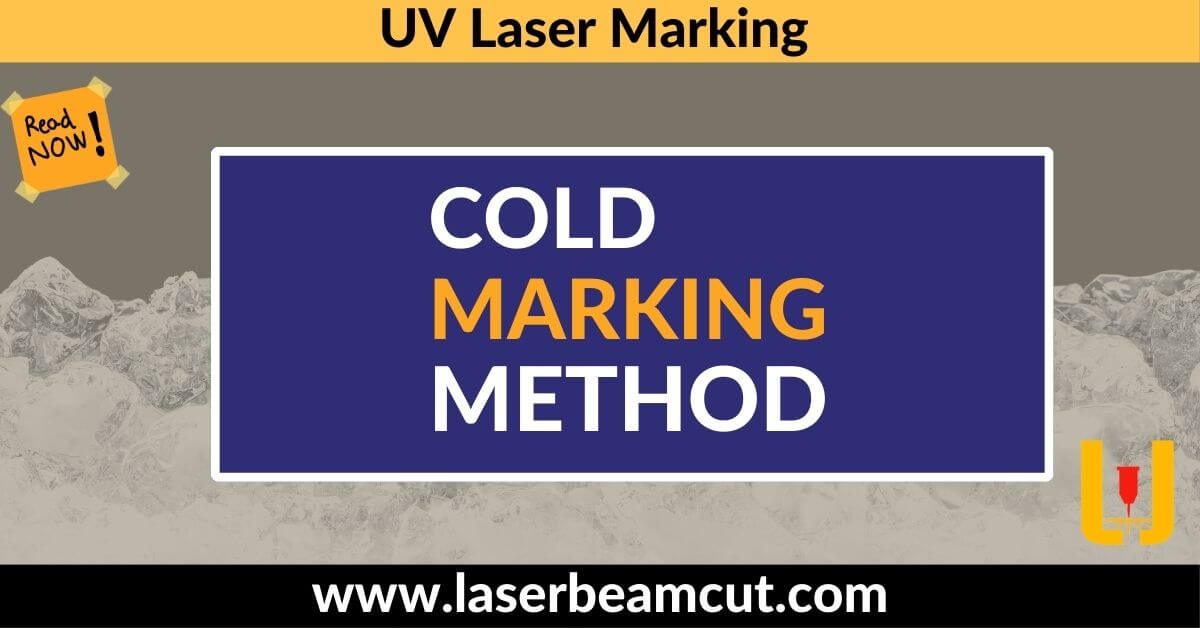In today’s world, product labeling plays a crucial role in enhancing brand recognition and maintaining comprehensive production records. With a wide range of marking options available in the market, choosing the right technology to label products has become essential. One such choice is UV laser marking machine technology.
While various types of lasers are available for marking different materials, many need high-wavelength lasers, and some need low-wavelength lasers, which are cold-marking lasers. It is where the UV laser comes into play, offering a solution to this problem.
This article will explore the details of UV laser marking. It will cover the fundamental working principles of UV lasers, examine their diverse applications in product labeling, and provide insights into the factors to consider when selecting the most suitable UV laser for your specific needs. Together, let us embark on this fascinating journey to explore the world of UV laser marking.
What is UV Laser and Their Types?
Before delving into the specifics of UV laser marking, it’s necessary to understand the essential components of a laser device. A laser device typically consists of three main segments: the optical cavity, power source, and gain medium. The type of gain medium used determines the type of laser.
UV lasers, in particular, utilize a gain medium that consists of either a crystal or gas. When this gain medium is excited by a power source, it generates photons of light that fall within the ultraviolet region of the electromagnetic spectrum. Their name, Ultra Violet lasers, arises from this characteristic.

Types of Ultraviolet Laser
There are three primary types of UV lasers
- Diode-pumped solid-state laser (355 nm Wavelength)
- Excimer laser (300 nm Wavelength)
- Metallic vapor laser (500-600 nm Wavelength)
In essence, UV lasers harness the unique properties of their gain medium to emit low-energy ultraviolet light, which makes them particularly well-suited for applications requiring precise and cold marking on various materials.
Now that we have a fundamental understanding of what UV lasers are and how they operate. Let’s delve deeper into their applications in product marking and explore how to choose the appropriate ultra violet marking laser for your specific needs.
UV Laser Marking and Their Applications
In the realm of product part labeling, you may have noticed various categories that determine the depth and visibility of the labels. Some labels penetrate deeply into the material, called uv laser etching, while others mark the surface superficially, called uv laser etching method. This surface marking method is similar to what UV laser marking entails.
 etching engraving marking embossing
etching engraving marking embossing
Using UV lasers, designs or patterns can be created on a product’s surface without affecting its chemical or physical properties. The distinguishing feature of UV laser marking is its ability to operate at “cold marking” wavelengths ranging from 300 to 600 nm. During the process, no heat stress is applied to the part, differentiating it from fiber and co2 laser marking methods.
Different materials exhibit varying levels of absorption for different wavelengths of light. For instance, materials such as PCB circuit boards require a low-energy marking process to avoid damaging delicate circuit connections. UV lasers are ideal for catering to these specific materials as they emit low-energy ultraviolet light. It makes them well-suited for marking sensitive surfaces.
By utilizing UV laser marking, manufacturers can achieve precise and intricate designs on various materials while ensuring the integrity and functionality of the product. Next, we will explore the wide range of applications for UV laser marking in part labeling. We will highlight its versatility and effectiveness across different industries.

Applications of UV laser Marking Machines
UV laser marking machines have various applications in industries that require a non-contact marking process for heat-sensitive materials. These machines demonstrate exceptional proficiency in marking numerous materials, including copper, silver, gold, plastics, and various organic materials. Let’s explore some specific applications of ultra violet laser marking machines:
Electronics and PCB Industry
UV laser marking machines find common usage in the electronics industry for marking PCB circuit boards, electronic components, and connectors. It ensures that delicate electrical connections and parts remain undamaged during the marking process.
Medical Devices
UV laser marking is crucial in the medical device industry, where strict regulations require clear and permanent identification of medical instruments, implants, and surgical tools. The non-contact nature of ultra violet laser marking ensures that the devices remain sterile and unaffected by heat during the marking process.
Automotive and Aerospace
In the automotive and aerospace sectors, UV laser marking machines assume a vital role by marking components like engine parts, control panels, dashboards, and aircraft parts. Ultra violet laser markings offer high precision and durability, ensuring traceability and brand protection.
Packaging and Bottling
Ultraviolet laser marking machines are employed in the packaging industry to mark labels, barcodes, and QR codes on various materials, including plastic, glass, and cardboard. The high-speed marking capability of ultra violet lasers enhances productivity in packaging and bottling lines.
Jewelry and Luxury Goods
Ultraviolet laser marking finds extensive application in marking intricate designs, logos, and serial numbers on jewelry, watches, and luxury goods. The non-intrusive nature of UV lasers preserves the integrity and value of precious materials.
Consumer Electronics
UV laser marking machines actively mark branding, product information, and serial numbers on consumer electronics such as smartphones, tablets, and laptops. Its high precision and long-lasting nature significantly enhance product authenticity and traceability.
It is just a sample of the many applications of UV laser marking machines. The versatility and precision of these machines make them indispensable in industries where cold marking is essential. The following sections will delve deeper into the factors to consider when choosing the suitable ultra violet laser marking machine for specific applications.
Factors to Consider UV Laser Marking Machine For Your Specific Applications
When there’s a need to select a UV laser marking machine for a specific application, consider several crucial factors. Here are some key points to keep in mind:

Material Compatibility
To ensure compatibility with the materials to be marked, including metals, plastics, ceramics, and organic materials, check if the ultra violet laser marking machine can accommodate them.
Different materials may necessitate specific laser parameters and power levels, so it is necessary to verify these requirements.
Marking Speed and Efficiency
Evaluate the marking speed of the machine to ensure it meets your production requirements. Consider the throughput and efficiency of the uv machine to optimize productivity.
Marking Resolution and Precision
When selecting a UV laser marking machine, prioritize high-resolution capabilities to achieve intricate and precise markings, especially for applications involving small or detailed designs.
Marking Depth and Contrast
Determine the required marking depth and contrast for your application. Enhanced readability may necessitate deeper or more prominent markings in specific applications.
Marking Area and Flexibility
When selecting a ultra violet laser marking machine, consider the size and flexibility of the marking area. Ensure that it can accommodate your specific products.
Ease of Use and Integration
Look for a user-friendly interface and software that simplifies operation and programming. Consider the compatibility and integration capabilities with existing production systems.
Maintenance and Reliability
Assess the machine’s reliability and ease of maintenance. Look for features such as self-cleaning mechanisms or easy access to critical components to minimize downtime and ensure consistent performance.
Safety and Compliance
Ensure the ultra violet laser marking machine complies with safety regulations and standards. Look for features such as interlocks, safety enclosures, and laser safety certifications.
After-Sales Support and Service
Consider the reputation and support provided by the manufacturer or supplier. Look for warranty coverage, training, and prompt technical assistance to address issues or concerns.
Summary (UV Laser Marking)
In this article, we took a closer look at UV laser marking ( non-contact and cold mark method) specifically designed for marking on sensitive materials. It discusses the crucial components of a ultraviolet lasers, explores its diverse applications across various industries, and provides insights into the key factors to consider when selecting a UV laser marking machine.
FAQs (Frequently Asked Questions)
1. Can UV laser marking be used on transparent materials such as glass or acrylic?
Ans: Yes! UV laser marking is well-suited for transparent materials like glass or acrylic due to its low wavelength and heat-safe properties.
2. What is a GALVO laser?
Ans: Galvo lasers are laser systems that use galvanometer scanners to rapidly and precisely direct the laser beam.
3. What is the difference between marking with etching and engraving?
Ans: Etching involves chemical erosion of the material’s surface, while engraving is a physical process that removes material using tools or lasers.
4. Is it possible to mark organic foods with a UV laser Marking machine?
Ans: Yes! It is possible to mark organic foods with a ultra violet laser, ensuring non-toxic and safe marking on their surfaces.
5. Can we cut materials with uv lasers?
Ans: Ultraviolet lasers primarily serve marking, engraving, and surface modification applications. UV laser cutting is generally uncommon.

